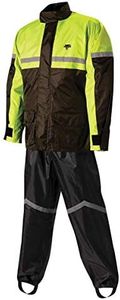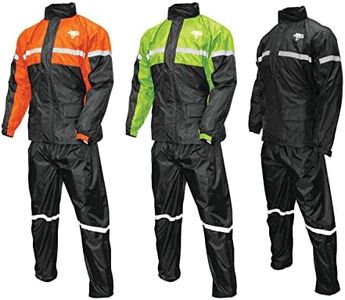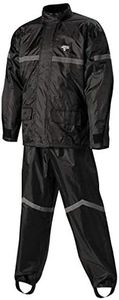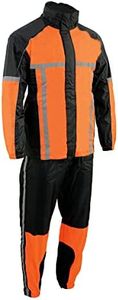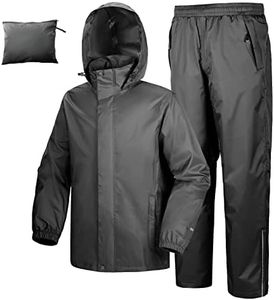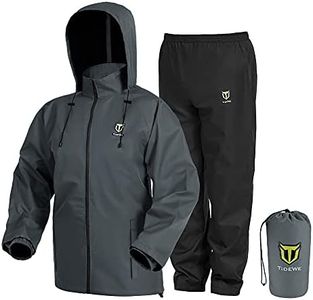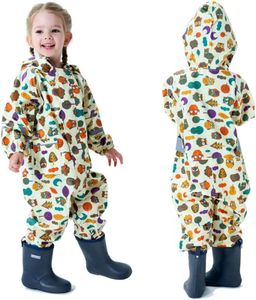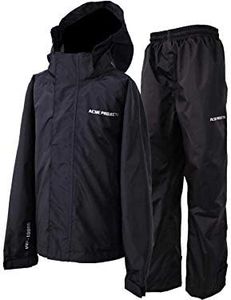We Use CookiesWe use cookies to enhance the security, performance,
functionality and for analytical and promotional activities. By continuing to browse this site you
are agreeing to our privacy policy
10 Best Rain Suits
From leading brands and best sellers available on the web.Buying Guide for the Best Rain Suits
Choosing the right rain suit will keep you dry, comfortable, and protected no matter how heavy the rain is or how long you spend outside. The best rain suit for you depends on how and where you'll use it—whether it's for daily commuting, hiking, fishing, or working outdoors. By understanding the main features and specifications, you can easily find a suit that meets your needs and keeps you happy when the weather turns wet.Waterproof MaterialThe most important feature of a rain suit is its ability to repel water. Waterproof materials keep rain from soaking through and are critical for staying dry. Materials range from basic coated nylons to advanced fabrics with special membranes. Lightweight materials are easier to pack and wear for everyday activities, while heavier duty materials are better for intense rain or rough use. People spending a lot of time in the rain or needing serious protection should look for suits with high-quality waterproof fabrics.
BreathabilityBreathability measures how well the rain suit lets your body moisture escape. This is important because non-breathable suits can feel hot and sweaty as you move around. Some suits use special linings or membranes for better airflow. For high activity like hiking or working, look for high breathability, while for brief or less active periods in the rain, basic breathability is usually enough.
Seam SealingSeams are often the weak points where water leaks into a rain suit. Seam sealing means these seams have been treated, welded, or taped to block water entry. Complete or fully taped seams offer the most protection and are best for heavy rain or all-day use. For light rain or occasional use, partial seam sealing may be sufficient.
Fit and AdjustabilityA good rain suit should fit comfortably over your regular clothing without restricting movement. Look for suits with adjustable features like cuffs, hems, and hoods, which let you customize the fit and further block out rain and wind. For active use or layering, choose suits that are slightly roomier; for lighter or fashion-oriented use, a closer fit may be preferable.
PackabilityPackability refers to how easily the suit can be folded and stored. Some rain suits are very compact and can fit into small bags, making them great for travel, hiking, or emergency use. Others are bulkier and offer more durability. If you need to carry your suit everywhere, lighter and more compact options are best; if you always wear it during rain, packability may matter less.
DurabilityDurability is about how well the suit holds up to repeated use, abrasion, and rough conditions. Heavier materials and reinforced areas provide higher durability and are ideal for frequent use or tough jobs. For occasional or urban use, a lighter, less durable but more comfortable material can be enough.
Ventilation FeaturesVentilation features, such as underarm zippers or mesh linings, help increase airflow and reduce heat buildup inside the suit. These are especially helpful for active users or warm weather situations. If you expect to sweat or move a lot, prioritize extra ventilation; otherwise, basic designs are usually sufficient.
Visibility EnhancementsSome rain suits include reflective strips or bright colors to increase your visibility in dark or rainy conditions. This is particularly useful if you plan to use your rain suit near traffic, when cycling, or at night. If safety is a concern, look for suits with these features; for remote or low-traffic use, they're less essential.
